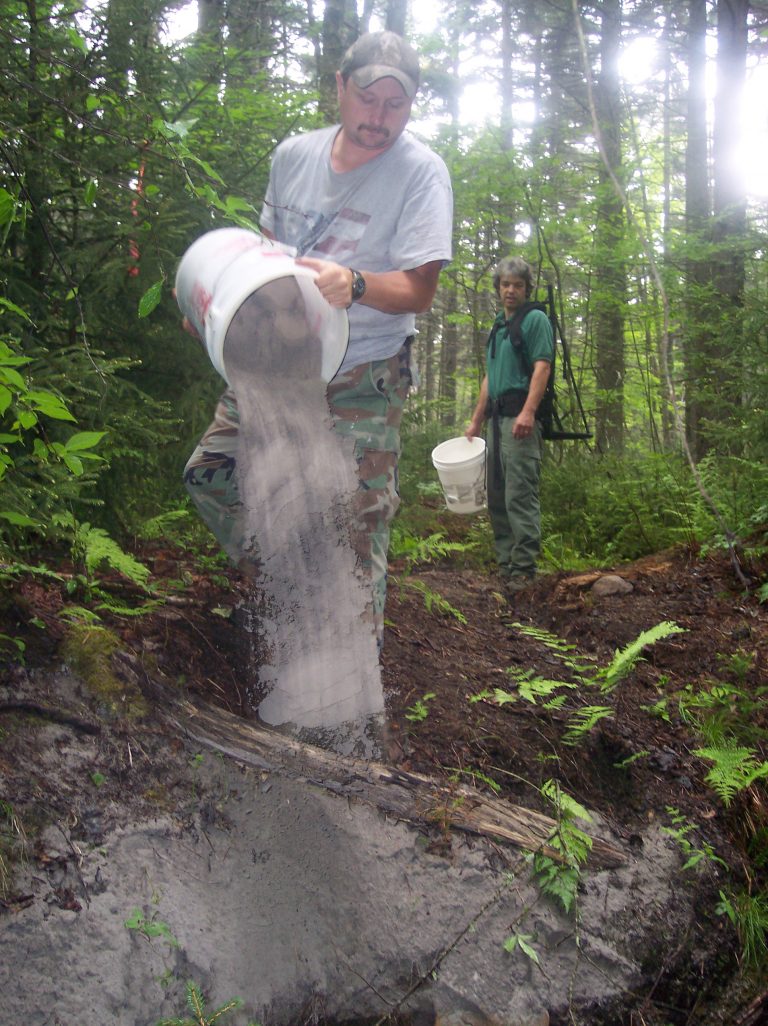ELKINS, W.Va. — It’s completely normal to think a person is crazy when they would suggest carrying 100 pounds of limestone sand on their back for a quarter mile and then repeating the process 10 straight times. It’s the reaction John Rebinski received in 2007 when he decided it was the best way to get the acid neutralizing material into the headwaters of the Middle Fork of Williams River.
“They thought I was crazy,” he laughed. “A lot of people shook their head at me, but I was determined. I really believe in what I do and I really wanted to make this a successful project.”
The project is part of a wider limestone treatment program the Division of Natural Resources has been executing in the high mountain trout streams of West Virginia since the 1970’s. Under Rebinski’s guidance, and that of other program pioneers, they noticed water quality improvement when limestone sand was dumped into ditch lines along the Highland Scenic Highway in Pocahontas and Webster Counties. Storm activity would carry the material downstream and into the watershed. However, there was a key tributary feeding the streams which was inaccessible.
“I was looking for a way to use a different type of idea to get these limestone sands into more isolated areas where we couldn’t drive a truck up to the stream and dump it in,” he explained. “But there’s no ditch line close enough to the highway to dump into, so about a quarter mile off the highway, I decided it was worthwhile to try and get some limestone sand into that area. So I started carrying it in on my back.”
The first year the labor was largely Rebinski on his own. He had the assistance of two DNR employees, one on the truck to load two 50 pound buckets of sand onto his back and another at the other end of the quarter mile hike to remove them and dump into the ditch line. He made the trip 10 times to get a thousand pounds into position. He did it several times a year and the results fueled his efforts.
“It’s a motivator as you see it slowly progressing down through the watershed,” he explained. “That’s what keeps you motivated to put more and more in. It’s a slow process, but it’s rewarding when the pH improves and then when it gets to a water which already has fish and the fish begin to move back upstream and repopulate, that’s the real source for celebration.”
During his second year of the effort, Rebinski’s success brought more attention and more help. Volunteers from Trout Unlimited, specifically members of the Ernie Nester Chapter, got involved and help move the sand. More recently, Wal-Mart employees joined the effort as a corporate project for the community. The project has become an annual event called the “bucket brigade” and generally draws about 100 volunteers. This year’s project happened Saturday and continues to be a source of pride for Rebinski as the native brook trout slowly make their way back into the headwaters of the Middle Fork of Williams River.
“I thought it was worth the try to at least attempt to do it,” he said. “I’m glad I did it and I had a lot of help along the way. DNR was very supportive and more and more people got involved, especially Trout Unlimited.”





